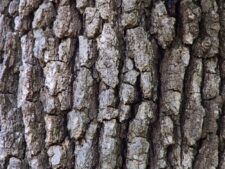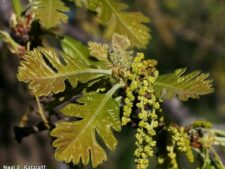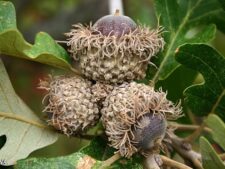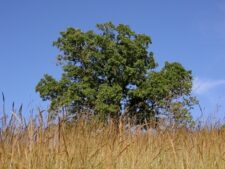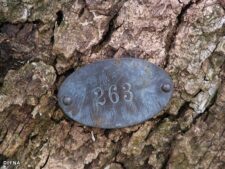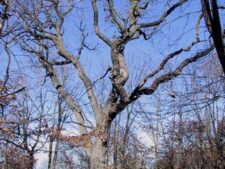
This large native tree grows up to 80 feet tall and more than 3 feet in diameter. Its trunk and branches have deeply furrowed, gray bark (B). The leaves have rounded lobes (A). Winter twigs are light brown and fuzzy (D). The male flowers come in dangling catkins (C). Female flowers are small and inconspicuous on the same twig. The fruit, an acorn, grows solitary or in clusters; it has fringes around its cup (E). Our other oak, the Red Oak (Quercus rubra) has a different bark, leaves with pointed lobes and acorns without fringes.
Grows in upland woods, flowering in April and May. In Fontenelle Forest, common along Oak Trail and on other ridges. At Neale Woods, common along History Trail. Because Bur Oaks cannot regenerate naturally in a closed forest, young Bur Oak saplings were planted on cleared ridges in Fontenelle Forest recently as part of the Oak Savanna Restauration Project, to try to reconstruct oak habitat the way it used to look before settlement by Europeans (F).
The oldest tree in Fontenelle Forest os a bur oak. Gary Garabrandt took core samples of all our older trees and tagged them near their base. No. 263 was found to be “born” between 1722 and 1727. It is located just off Oak Trail (G,H). Try to find it and pay your respects!
The content of NatureSearch is provided by dedicated volunteer Naturalists of Fontenelle Forest who strive to provide the most accurate information available. Contributors of the images retain their copyrights. The point of contact for this page is: Roland Barth.

